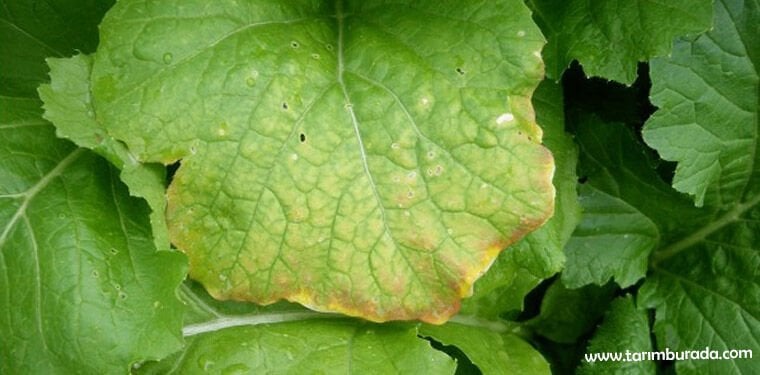Sulfur Deficiency in Plants and Fertilization Method

Sulfur is found in plants as a building material of amino acids, proteins (e.g. cystine), vitamins, enzymes, and some volatile compounds such as mustard oil. It is essential for chlorophyll. It adds flavor to many vegetables. It increases enzyme and vitamin development and activity. It helps improve root growth and seed production. It helps the plant to be strong and resistant to cold. Sulfur can be in rainwater, and plants can take up sulfur from rainwater. Sulfur is an element found in the structure of organic substances. Therefore, it can be found in organic and inorganic forms in the soil. However, a significant portion of the sulfur amount in soils consists of organic sulfur.
Plants take up sulfur in the form of sulfate ion (SO4-2) through their roots. On the other hand, they can also take in sulfur dioxide through their stomata. Sulfur is transported mostly upwards in plants. Carryover is very limited. Sulfur in old tissues is not transported to young tissues. It is washed with irrigation. Irrigation water may contain sulfur.
Sulfur Deficiency
: Sulfur deficiency in plants causes symptoms very similar to nitrogen deficiency. In other words, there is a homogeneous yellowing. What it lacks is light green leaves. But the difference is that yellowing occurs first on young leaves. In nitrogen, yellowing occurs in older leaves . This is because sulfur cannot be transported from old leaves to young leaves.
Sulfur Fertilization
Since sulfur is washed away with rainfall, sulfur fertilization is more important in rainy regions. Sulfur-containing fertilizers such as gypsum, ammonium sulfate, potassium sulfate, etc. can be used. Although it varies depending on plant, climate and soil conditions, it is generally used between 1-5 kg per decare. It is recommended to apply sulfur fertilizers in spring, especially in rainy regions.
